Crystal Candy on a Stick: Science and Sweetness
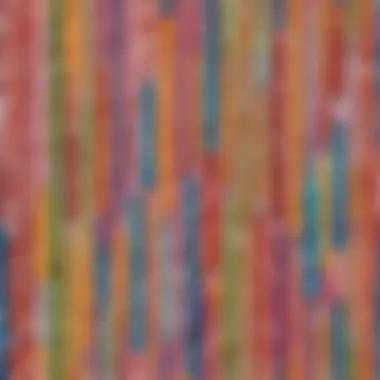
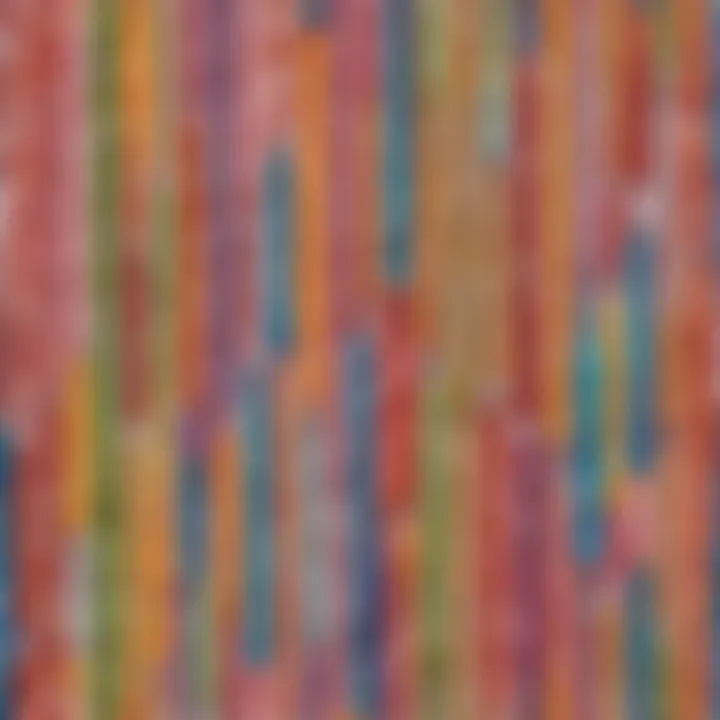
Intro
Crystal candy on a stick, often called rock candy, is much more than just a sugary treat. It represents a fascinating intersection of science, art, and culinary delight. The process of making these colorful, crystalline confections brings forward principles of chemistry and physics that can be explored and understood through hands-on activities. This guide aims not only to provide a recipe for creating crystal candy but also to journey through its historical roots and the science behind its formation.
In this article, we will diver into the intriguing world of crystallization, exploring how sugar transforms into captivating candy on a stick. It is important to make learning fun for children and caregivers alike. Hence, you'll find that every little step we cover provides valuable lessons in science while engaging the taste buds.
Science Fun Facts
Understanding crystallization helps us grasp key scientific facts about sugar and its properties. Here are some interesting facts that brighten our knowledge of crystal candy:
- The Oldest Candy: Crystal candy has been around for centuries, with origins dating back to Persia around 2200 B.C.
- Sugar’s Mutation: When sugar dissolves in water, it breaks down into smaller molecules, allowing new structures to form when it recrystallizes.
- Rock Candy Formation: Cooling down the syrup slowly encourages larger crystals to form; rapid cooling creates finer crystals.
"Crystallization is not just a useful method in candy making; it’s a phenomenon observed in nature—from snowflakes to mineral formations."
Interesting Trivia and Facts
- The largest rock candy was 1,900 pounds and made during a festival in the United States.
- Rock candy can also be found in various flavors and colors, catering to diverse tastes and preferences.
Quirky Science Stories
One fascinating story from candy history involves the great philosopher Aristotle, who believed that sugar tasted sweet due to influencing the soul's balance. This idea was not scientifically valid, but it shows how long humans have been curious about the effects of sugary treats.
Discover the Wonders of Science
This section will outline various scientific concepts related to crystal candy. Each concept can be an exciting learning opportunity that can be demonstrated through practical experiments.
Exploring Various Scientific Concepts
- Supersaturation: The more sugar dissolved in water, the more saturated it becomes.
- Crystallization Process: The act of forming solid crystals from a supersaturated solution involves cooling and evaporation.
- Temperature Influence: The temperature at which syrup is cooked greatly impacts the size and clarity of the crystals.
Educational Videos and Animations
You can find helpful resources that visualize these concepts. Websites like britannica.com offer educational videos explaining crystallization and other science processes.
Science Experiment Showcase
Making crystal candy can work as an exciting science experiment. Here’s how to do it in a few simple steps.
Step-by-Step Instructions
- Materials Needed:
- Instructions:
- 2 cups of water
- 4 cups of granulated sugar
- Wooden sticks or string
- A clean jar
- Boil water in a pot and gradually add sugar, stirring until dissolved.
- Allow the syrup to cool slightly.
- Pour the syrup into the jar, leaving some space at the top.
- Insert wooden sticks into the jar, making sure they are not touching the bottom.
- Place the jar in a warm, undisturbed area for several days until crystals form.
Safety Tips and Precautions
Care should be taken when boiling water and using tools for this experiment. Always supervise children while they are participating.
Closing Thoughts
The art of making crystal candy transcends simple cooking. It is an exploration of science, creativity, and tradition. By engaging in this activity, both children and their caregivers can dive into the principles that govern the sweet world around us while enjoying a delicious result of their efforts. Through understanding crystallization, we uncover the blend of scientific inquiry and culinary pleasure.
Preface to Crystal Candy
Crystal candy on a stick is not just a sugary delight, it embodies a compelling intersection of science, art, and history. Understanding this concept opens a window into how fundamentals like crystallization play a role in everyday life. Specifically, it enhances an appreciation for the craftsmanship involved in candy making.
Through this exploration, we see the importance of curiosity and experimentation in the kitchen. Candy making, particularly crystal candy, serves as an excellent educational tool. It teaches both basic scientific principles and culinary skills. By delving into how the candy forms and the processes behind it, young learners and their caregivers can bond over a fun and hands-on project that sparks interest in science.
Moreover, crystal candy represents a cultural artifact, reminding us of past traditions and the evolution of culinary practices. This section will dissect these elements and accentuate the need for a deeper understanding of what goes into making our favorite treats.
What is Crystal Candy?
Crystal candy is a type of hard candy known for its crystalline appearance. It's often served on a stick, making it easy to enjoy. The process of making crystal candy involves dissolving sugar in water and then allowing it to crystallize around a stick. This type of candy is characterized by its sweet flavor and can be made in a wide variety of colors and tastes.
Generally, it is associated with a visual appeal that delights both children and adults. The sparkling, translucent sugar crystals often invoke a sense of nostalgia. As simple as the process may seem, the science behind it is quite fascinating and involves several steps that affect the final product.
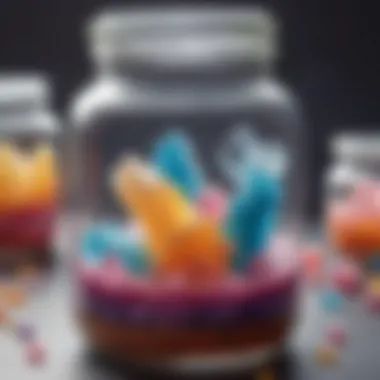
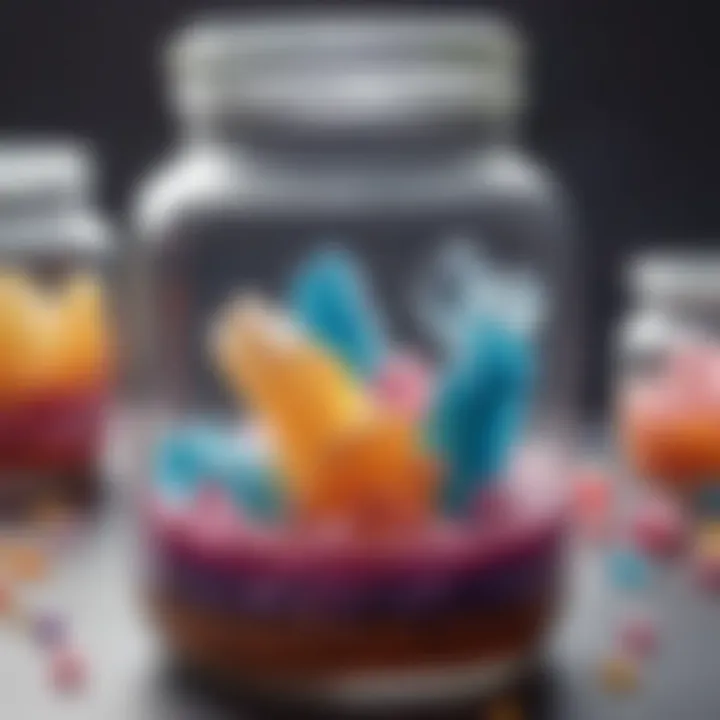
Historical Perspectives on Sugar Crystallization
The history of sugar crystallization dates back centuries, intertwined with trade and experimentation. Initially, sugar was a rare commodity, often seen as a luxury. Over time, advancements in technology and agricultural practices made sugar more accessible.
In the early days, sugar was often used in intricate designs for cakes and other desserts. With the passage of time, the method of crystallization evolved, making it possible to produce these candies on a larger scale. This transformation showcases not only the ingenuity of food science but also how cultural preferences can shift the landscape of food manufacturing.
The art of candy making was significant in many societies, often reflecting the social and economic status of people. Crystal candies, in particular, became a symbol of celebration and festivity. Today, this historical knowledge enhances our understanding and appreciation of such creations.
"Understanding the historical context of food items enriches our experience and connection to those treats."
As we explore further, the journey into crystal candy on a stick reveals not only how it’s made but also how it’s shaped through history.
Understanding the Science of Crystallization
Understanding the science of crystallization is vital when making crystal candy. It is not just about mixing sugar and water. The process involves a detailed grasp of how crystal structures form. This knowledge helps improve the quality of the candy and enhances the overall experience of making it. Knowing the science behind crystallization allows enthusiasts to experiment and yield better results in taste and texture. This section explains the essentials of chemistry involved, focusing on sugar.
The Chemistry of Sugar
Sugar is simple, yet complex. Chemically known as sucrose, it consists of glucose and fructose. When sugar dissolves in water, it creates a solution where sugar molecules spread out evenly. The way this happens is critical to making crystal candy. When conditions are right, sugar can come out of solution to form crystals.
The key aspect of sugar’s behavior in this solution is its mobility and capacity to bond. The properties of sugar play a significant role in determining the texture and appearance of the final product. Understanding these properties helps anyone who is trying to make crystal candy to tweak the recipe if the results do not meet expectations.
The Crystallization Process Explained
Crystallization involves several key steps, each contributing to the formation of beautiful sugar crystals. Here, we delve into important aspects: supersaturation, nucleation, and crystal growth.
Supersaturation
Supersaturation is a crucial concept in crystallization. This state occurs when a solution has more dissolved sugar than it can normally hold at a certain temperature. This condition is essential because it sets the stage for crystals to form.
Key Characteristic: Supersaturation allows sugar molecules to be in excess, waiting for conditions to change. This trait is particularly beneficial for making crystal candy because it leads to spontaneous crystal formation when the solution cools or when water begins to evaporate.
Advantages: Using supersaturation is popular in candy making because it maximizes the number of sugar particles available for crystallization. However, achieving and maintaining supersaturation requires careful monitoring of temperature and concentration.
Nucleation
Nucleation is the second step that allows crystals to form. This process describes how sugar molecules come together to create small clusters, forming nuclei. These tiny clusters serve as the foundation for larger crystals to grow from.
Key Characteristic: Nucleation can occur spontaneously or can be induced. Inducing nucleation can lead to more uniform crystals, which is desirable in candy production.
Advantages: It is advantageous because controlled nucleation helps achieve consistent results in the size and shape of crystals. Without proper nucleation, crystals can become irregular and less appealing.
Crystal Growth
Once nucleation has taken place, the sugar crystals will continue to form and grow. This growth happens as more sugar molecules attach to the existing crystals. The growth phase is where patience is vital, as it can take time for the crystals to reach the desired size.
Key Characteristic: The rate of crystal growth is influenced by various factors such as temperature and the concentration of sugar solution. Changes in these conditions can result in different crystal sizes and shapes.
Advantages: Careful control allows candy makers to influence the texture of their final product. Some might prefer larger, crunchier crystals, while others might want small, delicate ones. Understanding this process is key to achieving the desired outcome.
"Mastering the science of crystallization opens up endless possibilities in candy making."
Creating Crystal Candy: A Step-by-Step Guide
Creating crystal candy is not just a fun kitchen activity. It’s a journey into the realms of science and creativity. This section will guide you through the essential steps needed to make crystal candy on a stick. Each step includes valuable insights into why they matter. Understanding these components will enhance the overall candy-making experience for both children and adults alike. It fosters curiosity and encourages practical learning.
Gathering Ingredients and Materials
To begin the journey, one must understand what is needed. Gather the following key ingredients and tools:
- Sugar: The main ingredient. Choose granulated white sugar for best results.
- Water: This will dissolve the sugar to create a solution.
- Food Coloring: Optional, but it adds visual appeal.
- Flavoring Extracts: Such as vanilla or mint for added taste.
- Wooden Sticks: These will hold the candy crystals as they form.
- Clean Glass Jar: Used to hold the sugar solution.
Having these materials ready simplifies the process. It allows for a smoother flow during preparation.
Preparation of Sugar Solution
Mixing the right amount of sugar with water is crucial. Typically, a ratio of 2:1 of sugar to water is common. Heat the mixture gently until the sugar completely dissolves. This action creates a supersaturated solution. The solution must be clear. Any remaining sugar will not crystallize and may spoil the end product. Once the solution is prepared, let it cool before proceeding. The cooling period affects crystal formation significantly.
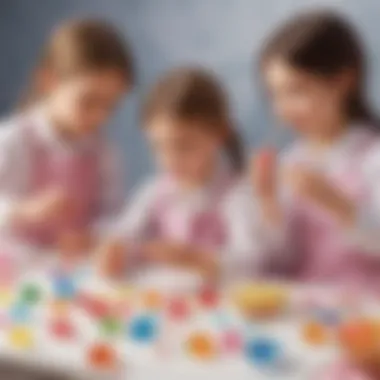
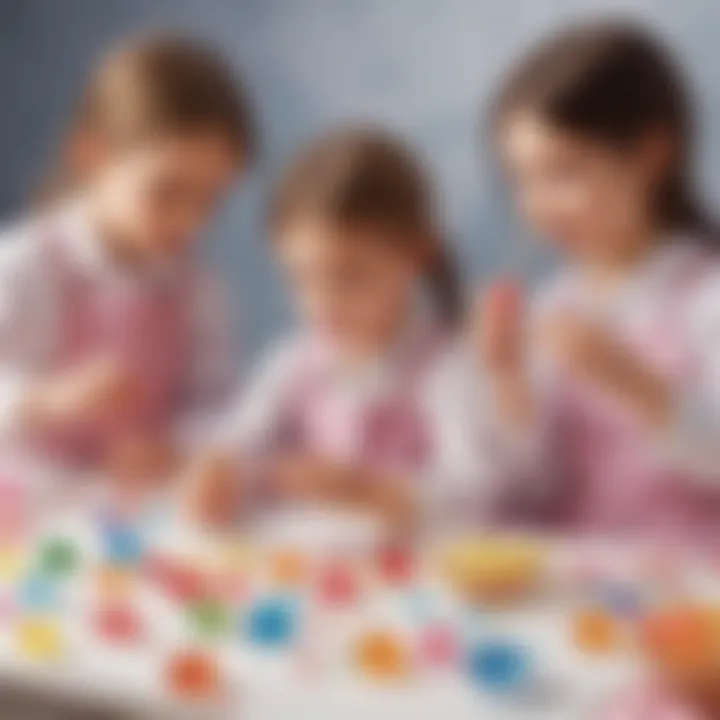
The Role of Control in Crystal Growth
Controlling the environment is vital for successful crystal growth. Small changes can impact the outcome significantly.
Temperature Consistency
Temperature consistency plays a major role in the crystal growing process. Keeping the temperature steady ensures that sugar molecules crystallize uniformly. Fluctuations can cause uneven crystal sizes or even failure to crystallize. A warm environment initially helps dissolve sugar, but once cooled, it should remain stable. Using a thermometer can help maintain an ideal temperature. This consistency is beneficial for achieving those perfect candy crystals.
Humidity Levels
Humidity levels also affect the candy-making process. High humidity can hinder crystallization as moisture in the air interferes with the sugar solution. Ideally, work in a dry environment to promote ideal conditions for crystal growth. Carefully monitoring the humidity during this process can increase the chances of success. On the contrary, too low humidity can also be adversarial. Balance is key.
Sticking to the Process
After setting up the sugar solution and controlling the environment, sticking to the process is crucial. This involves patience and attention.
Using Wooden Sticks
The use of wooden sticks is fundamental. They provide a surface for sugar molecules to attach and crystallize. Ensure they are clean and dry before using. Proper insertion into the solution is important; they should not touch the bottom of the jar. This helps prevent contamination and promotes an even crystal growth. Wooden sticks are a practical choice, making it easy to handle the candy after it forms.
Coating Techniques
Coating techniques can enhance the appearance and flavor of the final candy. Roll the sticks in granulated sugar before immersion. This gives the crystals something to cling to, promoting growth. After some time in the solution, additional coatings can be applied. Different flavors can also be introduced, depending on personal preference. This flexibility allows for creativity in your candy-making journey.
Following these steps carefully can lead to successful candy creation. The process combines science with fun and fosters learning. It promotes patience and attention to detail, valuable skills for young learners.
Exploring Flavors and Colors
The exploration of flavors and colors in the making of crystal candy adds depth to this sweet treat. It is not simply about texture; flavor and color enhance the visual appeal and sensory experience. Understanding how to select and use natural colorants and flavors is essential for creating a unique product that stands out.
Natural Colorants vs. Artificial Dyes
When it comes to color in candy, choices can be made between natural colorants and artificial dyes. Natural colorants, derived from fruits, vegetables, and spices, often provide vibrant hues without the chemicals found in synthetic options. For example, beet juice imparts a deep pink color, while turmeric offers a bright yellow tone. These natural options are also seen as beneficial due to their health advantages compared to artificial dyes, which sometimes are linked to allergic reactions or behavioral issues in children.
Using natural colorants emphasizes the artisanal aspect of candy making, appealing to health-conscious consumers. However, the challenge is that these colors can be less vivid or consistent than artificial dyes. Thus, it is important to explore different recipes to balance color intensity and safety.
Innovative Flavors to Experiment With
The choice of flavors plays a crucial role in the uniqueness of crystal candy. Experimentation with diverse flavors can yield surprising results. Here are some suggestions:
Fruits
Using fruits as flavoring allows for a wide range of tastes. Citrus fruits like lemons and oranges offer a refreshing zing, while berries can provide sweetness. The key characteristic of fruits is their natural sweetness, which can enhance the overall appeal of the candy. They are a beneficial choice because they add real fruit essence and nutrients, contributing to a more wholesome treat.
Fruits can be used in their pure form, such as fruit purees, or by infusing their juices into the sugar solution. A unique feature of fruits is their ability to impact both flavor and color simultaneously, making them highly versatile. However, it is worth noting that using fruits may alter the crystallization process, which can lead to inconsistency in texture.
Herbs
Herbs are another interesting option for flavoring crystal candy. Their savory notes complement sweetness and can create unexpected flavors. For instance, mint gives a fresh taste, while basil adds a hint of earthiness. Herbs can be a popular choice for those looking to innovate and create unique combinations.
These ingredients can infuse the sugar solution during heating, allowing their flavors to permeate the candy. The unique feature of herbs is how they can bridge sweet and savory, creating complexity in flavor. However, the challenge lies in balancing their stronger flavors, as they can easily overpower the sweetness if not used appropriately.
Spices
Lastly, spices bring warmth and depth that can elevate the flavor profile of crystal candy. Common spices like cinnamon, ginger, and cardamom can add warmth and richness. The key characteristic of spices is their potent flavor, allowing for a little to go a long way.
Incorporating spices becomes a beneficial choice for those who enjoy bold flavors. They can introduce cultural nuances to the candy, appealing to a broader audience. The unique feature of spices is their ability to create a multisensory experience, stimulating both taste and aroma. However, care must be taken to avoid bitterness by using them in moderation.
The Role of Experimentation in Learning
Experimentation lies at the heart of acquiring knowledge, especially in the culinary arts as seen in making crystal candy. This section delves into the vital role that experimentation plays in understanding both the science and satisfaction of creating this delightful treat. Engaging in experimentation allows one to grasp concepts beyond mere theory. When children and caregivers embark on this delicious journey, they sharpen critical thinking and problem-solving skills. It transforms the process of making candy into a hands-on learning experience.
In the kitchen, there are variables to control. The temperature, humidity, and ingredient quantities all affect the outcome. Through trial and error, one can observe how changes in these elements impact the stability and quality of sugar crystals. This approach reassures that mistakes are part of learning, leading to discoveries about the crystallization process. Ultimately, the benefits of experimenting with crystal candy extend far beyond the finished product, nurturing a sense of curiosity and encouraging further scientific exploration.
Trial and Error: The Path to Perfect Crystals
Achieving the perfect sugar crystals takes practice. Many novice candy makers will not succeed on the first try. Trial and error are crucial steps in this learning journey. Each attempt allows one to gather information on what adjustments to make. Factors like the boiling time of the sugar solution or the conditions under which crystals form can alter the final product's appearance and texture.
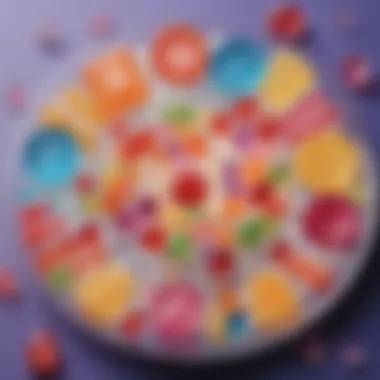
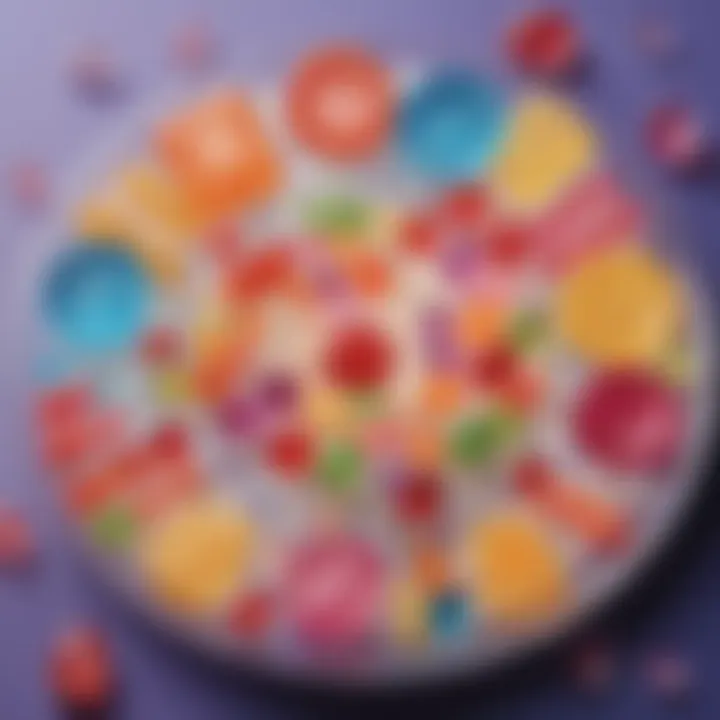
For example, if the result is too sticky, one might reduce the boiling time or modify the temperature. Often, crystal candy makers document each scenario in detail. This approach can lead to meaningful insights and a clearer understanding of candymaking.
Documenting Results for Better Understanding
Documenting the results of each experiment is crucial. By keeping a record, you create a reference that illuminates the intricacies of the crystallization process. One can note down the conditions tried, the ratios used, and the final results achieved. This data acts not only as a guide for future attempts but also assists in identifying patterns in successful candy-making efforts.
An effective way to maintain this information is through a candy-making journal. This journal can include:
- Recipes and variations tried
- Observations on texture and taste
- Photographs of each batch
Doing this can make a significant difference in future endeavors. When students see their progress, they become more engaged in the learning process. Experimentation becomes less about the fear of failure and more about the thrill of discovery.
Health Considerations in Candy Making
Making crystal candy on a stick is not just a fun activity; it also raises important health considerations. As with any sugary treat, understanding the effects on the body is crucial. Managing sugar intake is a priority for many, especially for children, who are often more susceptible to the effects of high sugar consumption. Educating young ones about moderation can lay the groundwork for healthier eating habits in the future. Therefore, awareness of the ingredients and their nutritional value is essential.
Managing Sugar Intake
Sugar plays a fundamental role in candy making, acting not only as a sweetener but also as a preservative. However, excessive consumption can lead to various health issues such as obesity, tooth decay, and type 2 diabetes. Encouraging children to enjoy crystal candy in moderation helps instill a balanced approach to sweets.
Here are some tips to help manage sugar intake while enjoying candy:
- Limit portions to small sizes.
- Try combining sugar candy with healthy snacks, like fruits or nuts.
- Educate kids about the importance of balance in their diets.
By promoting these habits, parents can help children appreciate the joy of sweets without overindulgence. This balance maintains enjoyment and nurtures their health.
Alternatives to Traditional Ingredients
The trend of seeking healthier ingredient alternatives has gained momentum in recent years. By substituting traditional sugar with other options, it is possible to create a more health-conscious candy experience. Two popular alternatives are honey and coconut sugar, which both provide unique benefits while still being sweet additions to crystal candy.
Using Honey
Honey is often viewed as a natural sweetener with some potential health benefits. Its distinct flavor can enhance the overall taste of crystal candy. One key characteristic of honey is that it has a lower glycemic index compared to regular sugar. This means it causes a slower rise in blood sugar levels, which can be advantageous for those monitoring their sugar intake.
Moreover, honey has trace vitamins and minerals like vitamin B6, calcium, and magnesium. Its unique flavor profile makes it a sought-after choice among those looking for alternatives to refined sugars. However, honey is not suitable for children under one year due to the risk of botulism, so caution is necessary.
Coconut Sugar
Coconut sugar is another alternative gaining traction. This sweetener is made from the sap of coconut palm trees and is known for containing certain nutrients, such as potassium and iron. One of the key characteristics of coconut sugar is its minimally processed nature, preserving some of its natural flavors and nutrients.
One unique feature of coconut sugar is its higher fiber content, which can slow down the absorption of sugar in the bloodstream. This makes it a favorable option for some seeking a healthier sweetener. However, it's important to remember that coconut sugar still contains calories and sugars, so it should be enjoyed in moderation as well.
Overall, these alternatives can be beneficial options for those wanting to explore different ways of preparing crystal candy while remaining health-conscious.
Culmination: The Sweet Result
In the journey of creating crystal candy on a stick, many layers unfold that reveal valuable lessons. This conclusion emphasizes the significance of all those steps taken—from understanding sugar crystallization to patiently observing the growth of sugar crystals. Each element plays a role in the final product, leading to sweet results that signify not only deliciousness but also the beauty of scientific processes at work.
By reflecting on this entire process, we can appreciate the convergence of art and science. Crafting crystal candy teaches patience and attention to detail, encouraging young learners to engage with various materials and techniques. It showcases the rewards that come from dedicated effort and experimentation. Individuals will see that learning is often not immediate. Instead, it is a gradual unfolding of knowledge and understanding, much like the slow growth of crystals themselves.
Reflecting on the Process
Reflecting on the process of making crystal candy is vital. It lets individuals recognize the importance of each stage involved, from solution preparation to crystallization. When children and caregivers revisit each phase, they familiarize themselves with concepts of science, such as supersaturation and temperature control. This deepens their understanding of the parameters that affect the outcome.
In addition, revisiting the experience facilitates a sense of accomplishment. Once the candy is made, tasting the end product becomes a celebration of their hard work. It fosters confidence in how applied science intersects with cooking and creativity.
This can also ignite new ideas for future experiments with flavors or colors. By taking notes during the process and discussing outcomes, participants can refine their techniques and enhance their baic knowledge of candies and crystallization.
Encouraging Curiosity in Science
Encouraging curiosity in science is an essential goal of making crystal candy. This culinary project opens a door to the realm of exploration. Children learn to ask questions about why certain reactions happen or how ingredients interact under varied conditions. Such discussions can lead to discovering the scientific method, which involves hypothesizing, testing, observing, and drawing conclusions.
To foster this curiosity, questions might include:
- What happens to the candy if I change the temperature?
- Will different sugars yield different results?
- How do natural colorants compare to artificial dyes in terms of effectiveness?
Encouraging these inquiries cultivates a mindset that values exploration and experimentation, which extends beyond the kitchen. Learning does not solely happen in formal settings. Engaging activities at home can equal the educational power found in classrooms.
Emphasizing the joy of discovery reinforces the idea that science is not just about formulas and theories but also about experiences and fun. Crafting crystal candy becomes a touching point for children and caregivers, allowing them to bond while growing their understanding of science through hands-on activities.
"The sweetest journey into science often starts in our own kitchens."
On a final note, as this article illustrates, creating and enjoying crystal candy can be an enrichment tool. The blend of learning and play leads to an effective educational experience, benefiting both young learners and their mentors.







